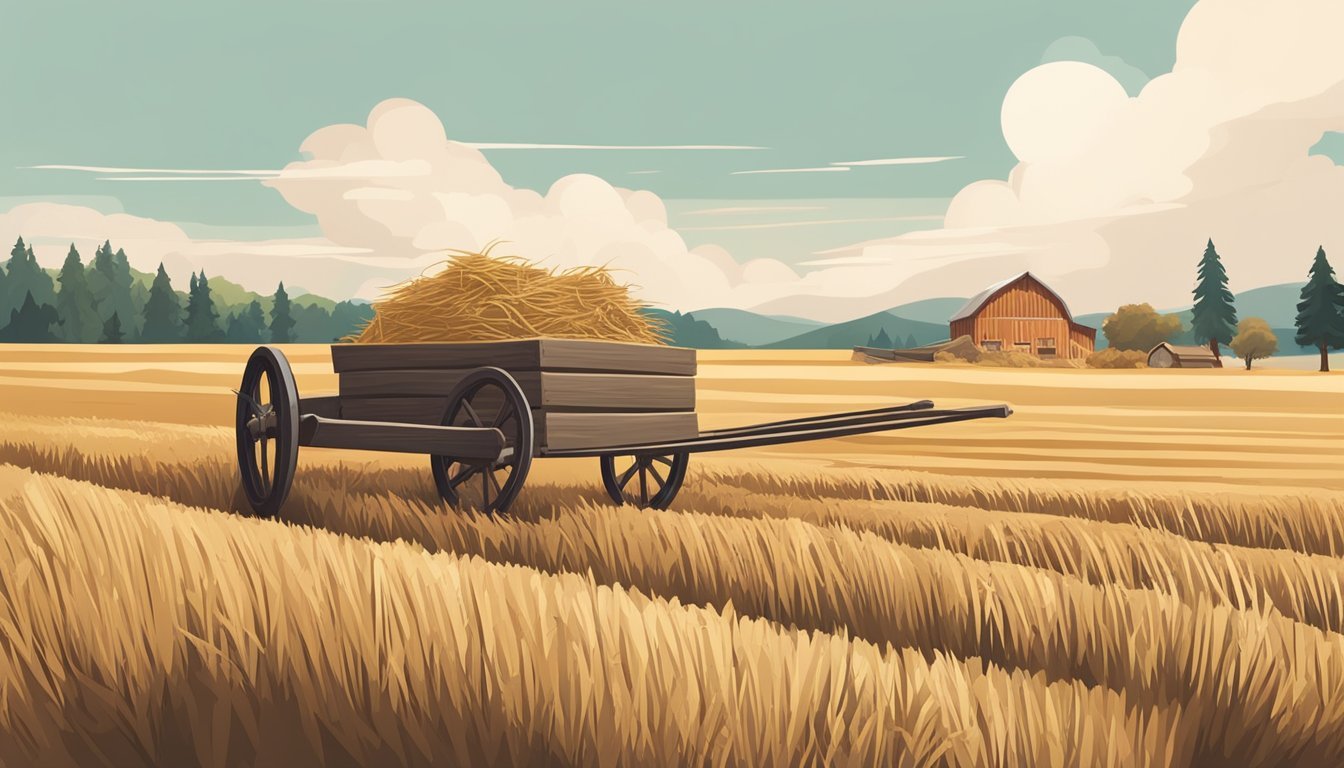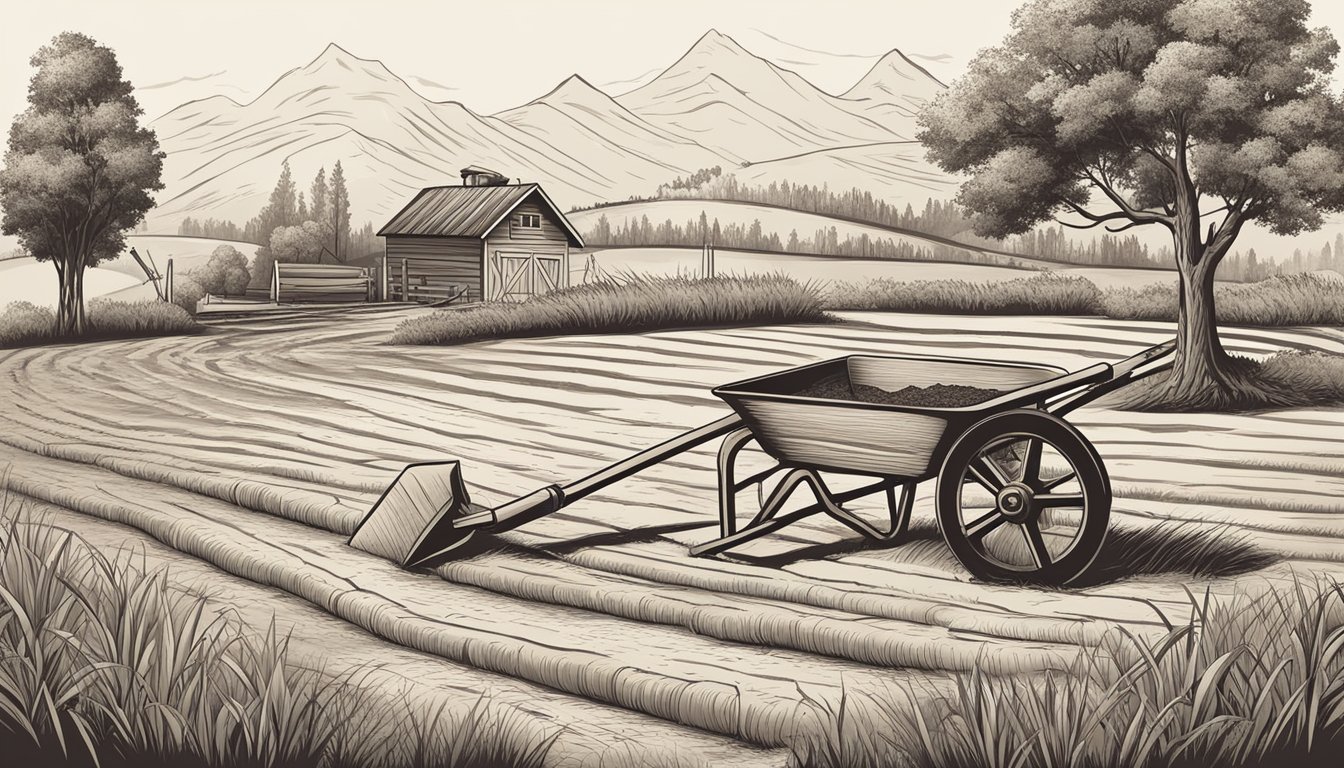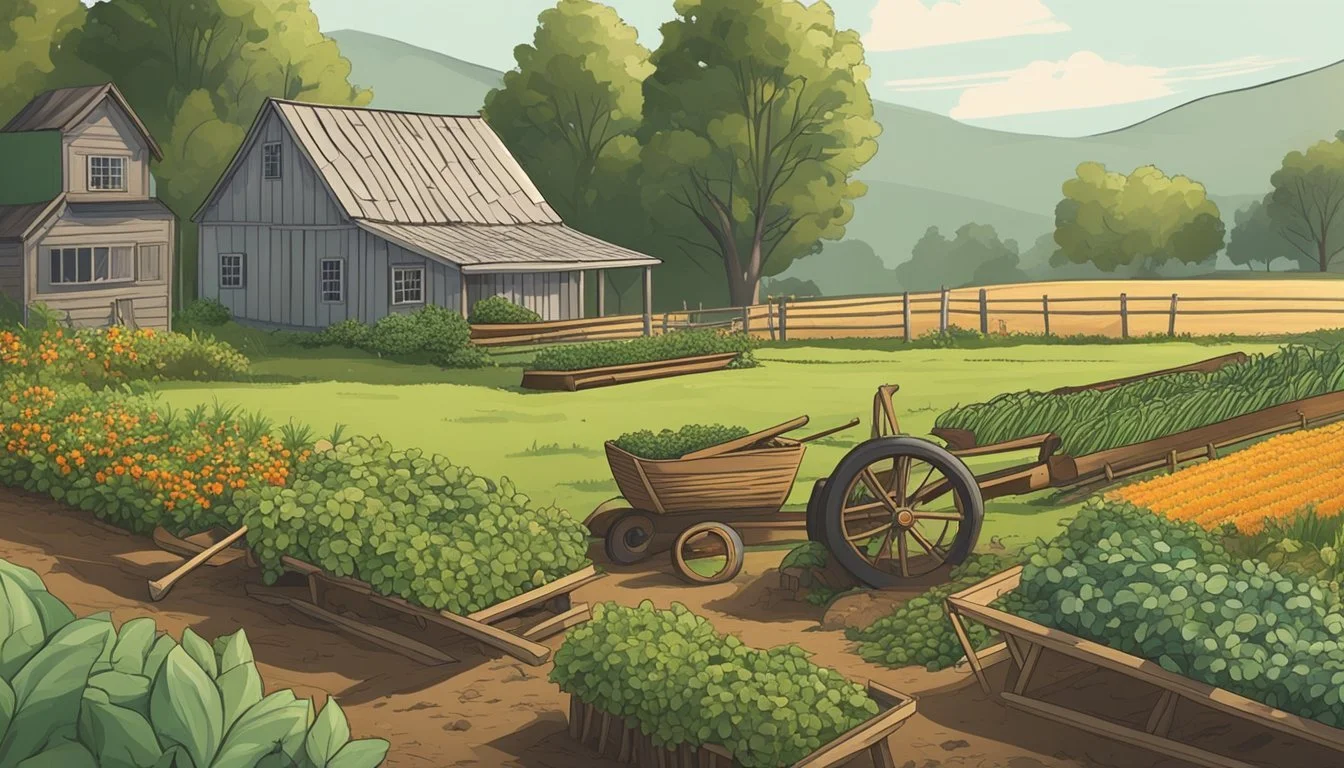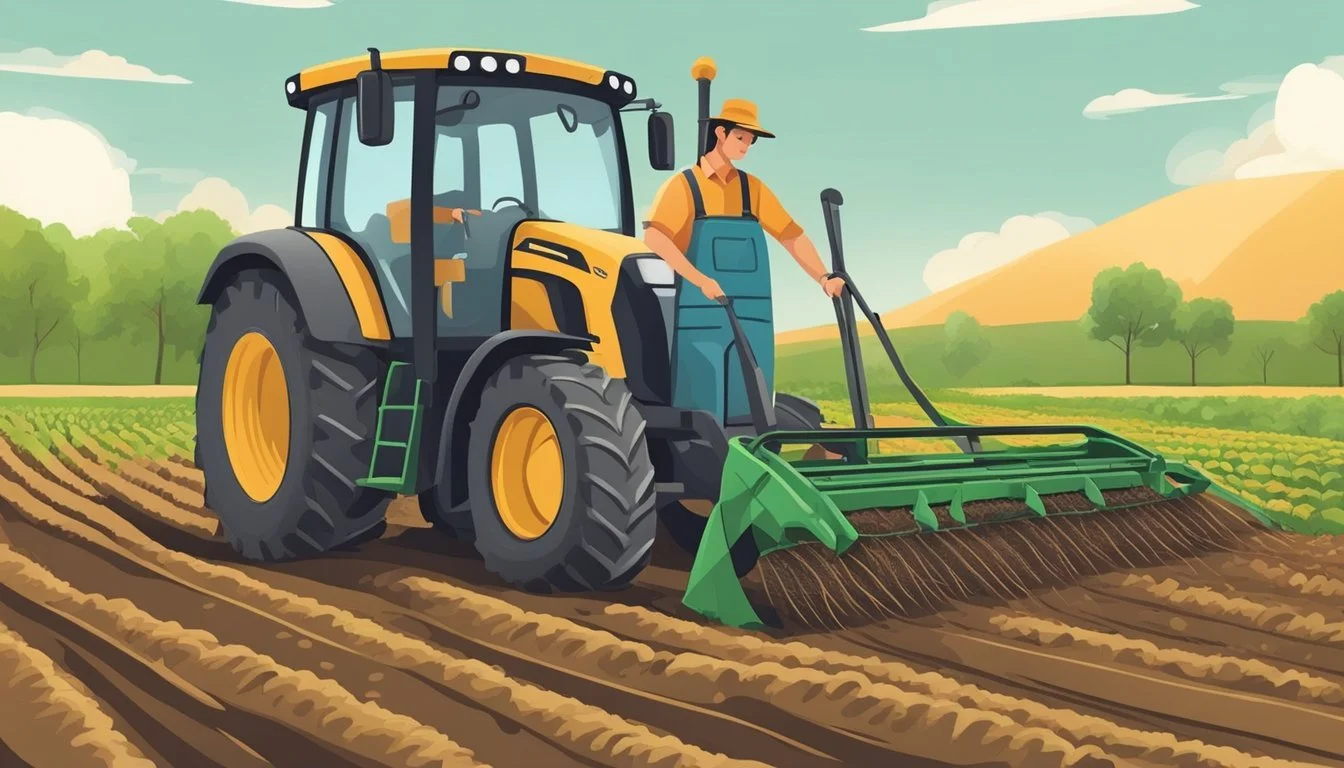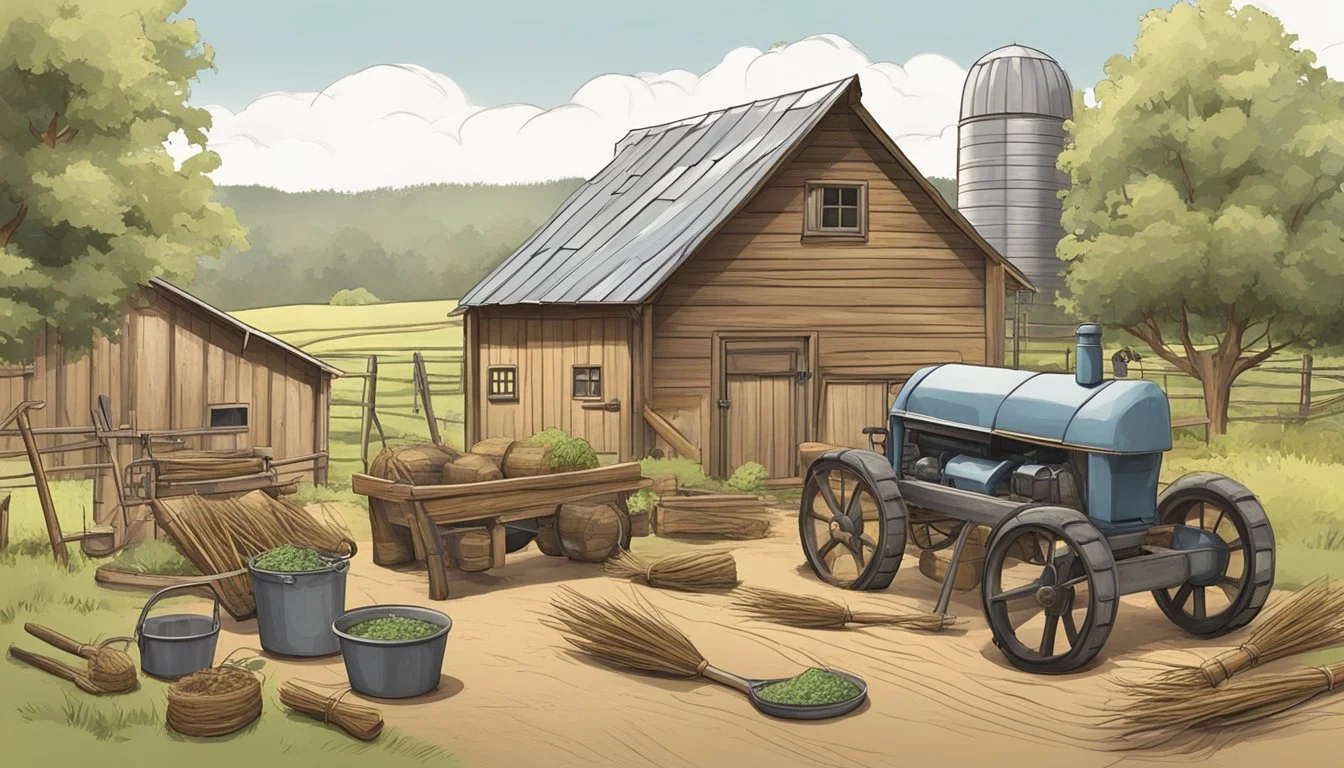Low-Tech Farming Tools and Equipment
A Guide to Traditional Agricultural Practices
In recent years, the appeal of low-tech farming tools and equipment has surged among those committed to sustainable agriculture. This resurgence is driven by a desire for simplicity, accessibility, and a deeper connection to the land. Low-tech tools, often human or animal-powered, offer small-scale farmers a way to accomplish daily tasks without reliance on expensive, fuel-powered machinery. The adoption of these tools aligns with a broader movement towards food systems that are resilient and environmentally responsible.
The use of low-tech equipment in agriculture is not just a nod to tradition but a practical choice for enhancing sustainability. By utilizing tools that require less energy and manufacturing resources, farmers can reduce their carbon footprint and cultivate their crops with minimal soil disturbance. This practice is particularly vital in the context of organic farming where soil health is paramount. Moreover, through the careful selection and use of appropriate implements, farmers can cultivate resilience, ensuring their operations can withstand various social and environmental challenges.
Tools such as broadforks, wheel hoes, and scythes, for example, are emblematic of the low-tech farming approach. These tools are not only effective for small-scale operations but also foster a more intimate understanding of the land. As farmers work closer to the soil, they can observe subtle changes in the environment, allowing for more informed and responsive farming practices. Embracing low-tech solutions helps uphold the values of sustainability and resilience in agriculture, ensuring food production can continue to thrive.
Historical Context of Farming Tools
The evolution of farming equipment is pivotal in understanding the transformation of agrarian societies and food production techniques. Technological advancements led to the modernization of agricultural practices and improved efficiencies.
Evolution of Farm Equipment
Early agrarian societies relied on rudimentary implements such as hand-held hoes and plows drawn by animals. The industrial revolution brought significant advancements with the introduction of complex machinery. For instance, during the first American agricultural revolution between 1862 to 1875, innovations such as the gang plow and sulky plows came into play, marking the shift from hand power to horse power. The trial of steam tractors in 1868 signaled the beginning of mechanized farming, which would continue to evolve into the sophisticated tractors and machinery seen in the 20th century.
Transition from High-Tech to Low-Tech Solutions
In recent times, a trend of revisiting low-tech solutions has emerged, often in response to the challenges posed by high-tech approaches, including sustainability concerns and resource management. For example, hand tools and horse-drawn implements are being re-evaluated for their low environmental impact and suitability for small-scale farms. This shift also underscores a broader societal desire to achieve a balance between technology and traditional farming methods that have sustained human societies for centuries.
Fundamentals of Low-Tech Farming
Low-tech farming relies on traditional methods and simple tools that enable sustainable cultivation and reliable yields with minimal reliance on modern, high-tech equipment.
Basic Tools and Equipment
The backbone of low-tech farming is a set of basic hand tools that require manual operation. These often include:
Hoes and rakes: Essential for soil preparation, weed control, and garden maintenance.
Spades and shovels: Utilized for digging and moving soil.
Scythes or sickles: Used for manually harvesting crops and cutting grasses.
Watering cans and buckets: Vital for transporting water for irrigation purposes.
These tools are relatively affordable and can last for years if maintained properly. They enable farmers to closely manage their crops, seeds, and soil on a micro-level, carefully controlling planting and cultivation processes.
Low-Tech Machinery and Implements
Beyond hand tools, several low-tech machinery options aid in farming efficiency while still aligning with organic farming principles:
Wheel hoes: Allow for quicker weeding and tilling without mechanized power.
Manually operated seeders: These ensure precise sowing of seeds with minimal waste.
Drip irrigation systems: They provide efficient water use by delivering water directly to plant roots and can be operated without reliant on complex technology.
Animal-drawn plows: An option for deeper cultivation of soil, which can also be used for turning in manure as a natural fertilizer.
Integrated with organic practices such as mulching and the use of organic manure, these implements can enhance soil fertility and water retention, leading to healthier crops and improved yields.
Importance in Modern Agriculture
Low-tech farming tools and equipment play a pivotal role in modern agriculture, helping maintain the balance between productivity and sustainability. These tools provide critical support for small-scale farmers and contribute valuably to biodiversity and environmental health.
Supporting Small-Scale Farmers
For small-scale farmers, who often work with limited resources and face barriers to adopting advanced technologies, low-tech tools are essential. These tools are usually more affordable and easier to maintain, making them suitable for smaller plots of arable land where the use of large, high-tech machinery is impractical. For example, simple hand tools like hoes and spades allow for precise cultivation, minimizing soil disruption and preserving soil health. Likewise, manually operated seed drills enhance planting efficiency without the need for expensive, energy-consuming equipment.
Contributions to Biodiversity and Environment
Low-tech equipment is often aligned with ecologically friendly farming practices, which support biodiversity. Practices such as manual weeding or the use of animal traction for ploughing reduce reliance on chemical herbicides and fossil fuels, thereby lowering greenhouse gas emissions that contribute to climate change. By enabling more targeted interventions in agricultural processes, these tools help preserve habitats within farmlands, fostering an environment where various plant and animal species can thrive. This diversity, in turn, strengthens ecosystem resilience and promotes a balance in the local environment. Using such equipment, farmers can cultivate their land much more sustainably, supporting the natural cycles and processes that are vital for long-term agricultural productivity.
Role in Sustainable Food Systems
Low-tech farming tools and equipment play a pivotal role in creating sustainable food systems by supporting quality food production and adhering to environmental standards. These tools contribute to improved crop yields and are essential in both organic and precision agriculture practices.
Quality and Standards of Food Production
Quality food production is paramount to the integrity of sustainable food systems, and low-tech tools are instrumental in upholding standards of quality. The application of these tools ensures that soil health is maintained and enhanced, resulting in the production of healthier crops. Hand tools, manual seeding machines, and other low-tech equipment enable farmers to work the land without causing excessive soil compaction, thus preserving the structure and aeration of the soil which is necessary for high-quality crop production.
Organic and Precision Agriculture
In organic farming, the absence of synthetic fertilizers and pesticides makes the role of low-tech tools crucial. These tools facilitate the farmer's ability to implement organic farming practices by reducing the weed burden with manual hoes or promoting aeration and water absorption through simple tilling equipment.
Precision agriculture benefits from low-tech tools by allowing farmers to apply inputs, such as water or organic fertilizers, in a precise and measured manner. This targeted approach reduces waste and environmental impact. Low-tech equipment like drip irrigation systems exemplify precision agriculture by delivering water directly to the plant roots, thus maximizing efficiency and supporting sustainable water management practices.
By using low-tech tools in tandem with organic and precision agriculture, farmers maintain a delicate balance between efficient food production and ecological stewardship, assuring long-term sustainability and resilience of the food system.
Technological Innovations and Practices
In the realm of agriculture, technological advancements have streamlined numerous processes from soil analysis to crop monitoring. Farmers now leverage data-driven tools and low-tech innovations to achieve better yields and improve sustainability.
Role of Data and Sensors
The integration of sensors in farming equipment has revolutionized how farmers gather and use data. Precise sensors embedded in the fields or attached to machinery allow for real-time data collection on soil moisture levels, pH values, and more. This immediate access to information enables farmers to make informed decisions, such as optimizing irrigation schedules to conserve water while boosting plant health.
GPS Technology: GPS devices mounted on tractors assist in precise field mapping and soil sampling, contributing to efficient seeding and fertilization practices.
Remote Sensors: Detection of variations in fields is simplified with the use of drones equipped with sensors, providing aerial data that supports the health and vigor assessment of crops.
Emerging Low-Tech Innovations
Even with a trend towards high-tech solutions, there is a growing appreciation for the value of emerging low-tech innovations. These inventions are cost-effective and accessible, yet significantly enhance agricultural productivity.
Soil Blocks: A resurgence in soil block makers, a simple hand-operated tool, creates seed starting blocks that eliminate the need for disposable pots.
Wheel Hoes: Updated designs of the wheel hoe make weeding and cultivating more efficient without the complexities of powered machinery.
Innovations in material science have led to the development of biodegradable mulches and new irrigation techniques that reduce the reliance on energy-intensive systems. Whether through sophisticated software or simple implements, the union of technology and traditional practices is proving to be a formidable approach to modern farming challenges.
Economic and Social Impact
Low-Tech Farming Tools and Equipment have a profound influence on both the economy and the social fabric of rural communities. These impacts are notably seen through the lens of affordability and the growth of community-led initiatives.
Affordability and Accessibility
Low-tech farming tools are often affordable solutions that enable widespread accessibility to effective agricultural practices. They do not necessitate large capital investments, making them viable options for smallholder farmers. Cooperatives have played a critical role in disseminating these tools, allowing shared access among farmers which further reduces individual costs. For instance, organisations like L'atelier Paysan in France empower farmers through participatory workshops to build their own equipment, fostering self-reliance and resilience.
Additionally, grants and incentives provided by governments and non-governmental organizations serve to lower financial barriers. These subsidies make essential tools available at reduced prices or, in some cases, for free. This approach facilitates equitable opportunities for farmers to enhance productivity, irrespective of their economic status.
Community-Led Initiatives
Community-led initiatives like Farm Hack operate on the principles of open-source technology and knowledge sharing, which contribute significantly to the empowerment of the agricultural community. By focusing on collaborative innovation, these platforms serve as hubs where farmers, engineers, and designers co-create adaptations and improvements to farming tools.
The creation of farming cooperatives also represents a pivotal social impact of low-tech farming tools. These cooperatives are founded on principles of mutual assistance and knowledge exchange, enabling small-scale farmers to thrive collectively. They exemplify local solutions to local challenges, emphasizing the idea that technology should be adaptable to the context of the community using it.
Through these means, the utilization of low-tech tools not only drives economic growth by increasing the affordability of farming but also strengthens social ties by fostering community-led solutions and cooperative models in agricultural practices.
Challenges and Future Perspectives
In the realm of low-tech farming tools and equipment, the challenges and future perspectives are deeply intertwined with climate resilience and the removal of barriers to adoption.
Adapting to Climate Change
Climate change imposes grave challenges on agriculture. Farmers need resilient strategies that can help their crops thrive despite unreliable weather patterns and more extreme events. Low-tech tools must be updated to ensure that they are capable of adapting to different climate realities, especially for areas prone to droughts or floods. For instance, simple water conservation techniques and tools that improve soil retention can play a pivotal role in managing the effects of erratic rainfall.
Barriers to Adoption and Expansion
Despite their benefits, several barriers hinder the adoption and expansion of low-tech farming solutions. Prominently, the implementation of improved low-tech tools often requires initial costs that can be prohibitive for small-scale farmers. Furthermore, there is a noticeable gap in knowledge and training, which translates into a reluctance to depend on unfamiliar equipment. These factors are crucial to consider, given that smallholder farms significantly contribute to feeding the global population. Thus, efforts to educate and provide financial support can catalyze the adoption of such essential equipment, fostering a more robust agricultural landscape.
Resources and Further Learning
This section serves as a bridge for farmers and educators looking to expand their knowledge and practical skills in low-tech farming. It brings to light educational materials and open-source communities that are dedicated to sustainable agriculture practices.
Educational Materials
Farmers and agricultural students can find a wealth of printed guides and online publications on equipment and tools for small-scale intensive crop production. One such example is "Build Your Own Farm Tools," a publication that acts as a comprehensive guide for creating custom farming tools tailored to individual needs. Additionally, organizations like the National Institute of Food and Agriculture provide insights into modern farm operations and the technologies shaping them.
In the realm of digital resources, agricultural professionals can explore platforms offering courses and webinars focused on agroecology and sustainable farming methods. These platforms often provide case studies, instructional videos, and interactive learning tools to aid in the practical application of low-tech farming principles.
Open-Source Communities
Open-source communities are pivotal in the democratization of agricultural knowledge. They foster networks of farmers, developers, and scientists collaborating on projects and sharing tools that can be freely used, modified, and distributed. These communities help in the creation of technologies such as low-power, wide-area networks (LPWAN) and Wi-Fi 6, which can assist in the efficient management of farm operations and facilitate the adoption of precision agriculture practices, as discussed in McKinsey & Company's agriculture report.
Farmers can connect with others through forums and online platforms that focus on low-tech equipment designs and innovative farming techniques. By participating in these communities, farmers can contribute their insights, learn from peers globally, and access a vast repository of open-source tools that are particularly valuable for those practicing agroecology.

